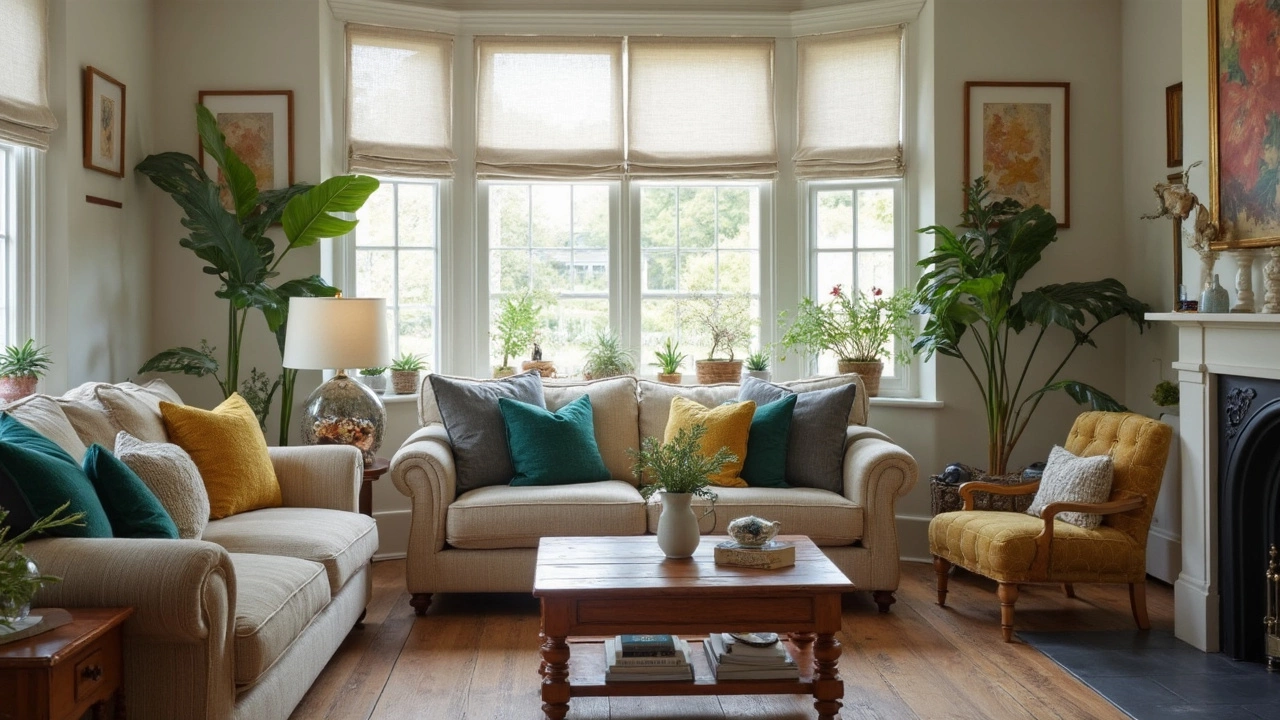Struggling to pick the right sofa colour for your home? This article breaks down what actually works when it comes to choosing the perfect shade, especially for sofa cushions. You'll learn which colors hide stains, make small rooms look bigger, and work with different styles. Get straightforward advice and real-life pointers—no trendy jargon or confusing rules. Save yourself time, money, and future regrets.
Couch Design Ideas: Easy Tips to Style, Place & Care for Your Sofa
Looking to give your living room a fresh look without a full remodel? Your couch is the centerpiece, so tweaking its design, placement, and upkeep can make a huge difference. Below you’ll find practical advice you can start using today – from picking the right shape to cleaning hidden stains and knowing when it’s time for a new sofa.
Choose the Right Sofa for Your Space
First thing’s first: the sofa’s size and shape must fit the room’s footprint. Measure the wall length, leave at least 30 cm of walking space around the piece, and think about traffic flow. If you have a small lounge, a sleek two‑seater or a low‑back modular section will keep the space feeling open. Bigger rooms can handle a sectional or a deep‑seat three‑piece set, but avoid crowding the area with extra furniture.
Corner sofas are a popular way to maximise seating without using extra floor space. To make a corner sofa look intentional, anchor it with a rug that runs under the front legs and add a couple of decorative cushions in contrasting colours. This breaks up the solid block and adds visual interest. Choose cushion fabrics that match other textiles in the room – think curtains, throws, or the colour of your armchair.
When picking upholstery, think about durability and lifestyle. Leather ages well but shows scratches; microfiber hides pet hair; a woven linen offers a relaxed vibe but may need a protective spray. If you have kids, look for fabrics with a stain‑resistant finish – it saves you from frantic cleaning after every spill.
Placement, Maintenance, and When to Replace
Where you put your sofa matters for comfort and aesthetics. Avoid placing it directly opposite a window with harsh glare; a side wall or a floating arrangement with a coffee table in front works better. If you’re a film buff, keep the TV at eye level and at least 2.5 m away for a comfortable view. Avoid mounting the TV on a wall that forces the couch into an awkward angle – that can ruin both posture and the room’s flow.
Cleaning is easier than you think, even with non‑removable cushions. Spot‑clean stains immediately with a mild detergent and a soft cloth. For deeper cleaning, use a handheld steamer or a low‑moisture upholstery cleaner; it lifts grime without soaking the foam. Rotate cushions every few months so they wear evenly, and flip the sofa if the frame allows it.
How do you know it’s time for a new couch? Look for sagging seat springs, cracked frame, or persistent odours that cleaning can’t fix. If your sofa has served you for 7‑10 years and the comfort level has dropped, it’s usually more cost‑effective to replace than to keep repairing. When shopping for a replacement, consider a modular design that lets you reconfigure pieces as your needs change.
Finally, think about accessories. A well‑placed floor lamp, a side table with a plant, or an eye‑catching artwork above the sofa can pull the whole room together. Keep the colour palette cohesive – if your sofa is a neutral tone, add a pop of colour with cushions or a bold rug. This small touch can make the space feel curated rather than random.
With the right size, thoughtful placement, regular care, and a few stylish accents, your couch can become the star of the room for years to come. Start with one quick change – maybe a new cushion set or a different rug layout – and watch the whole living area feel refreshed instantly.
